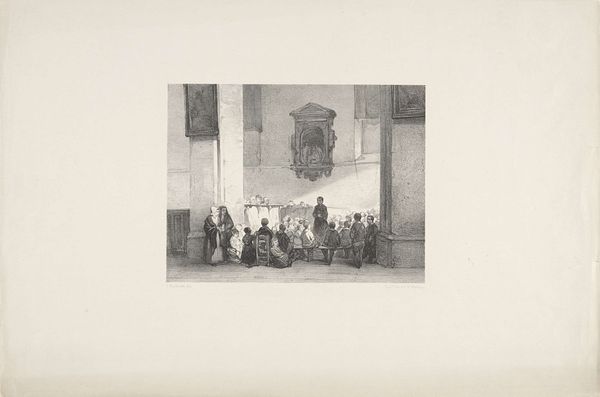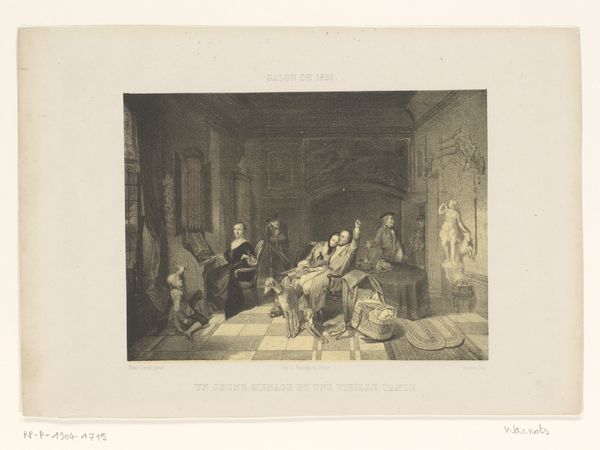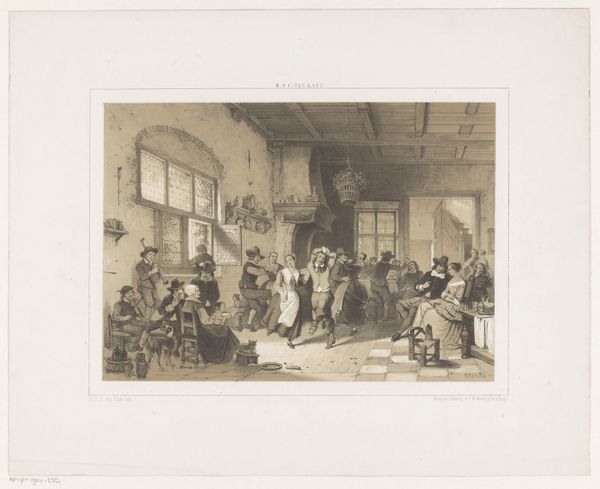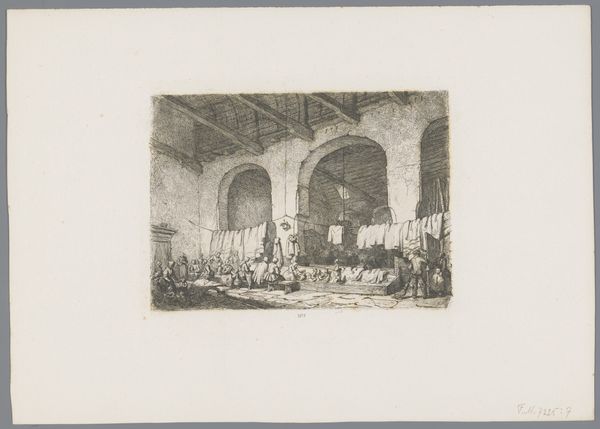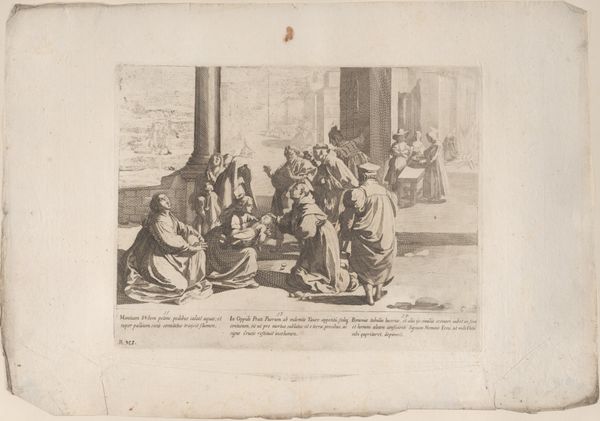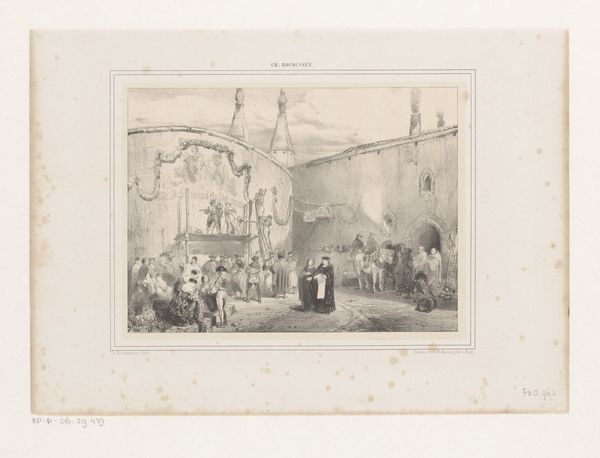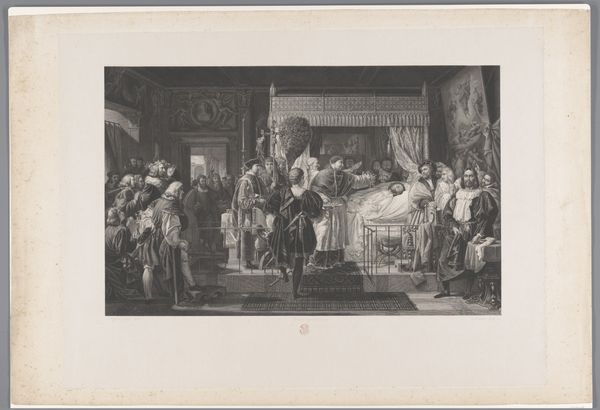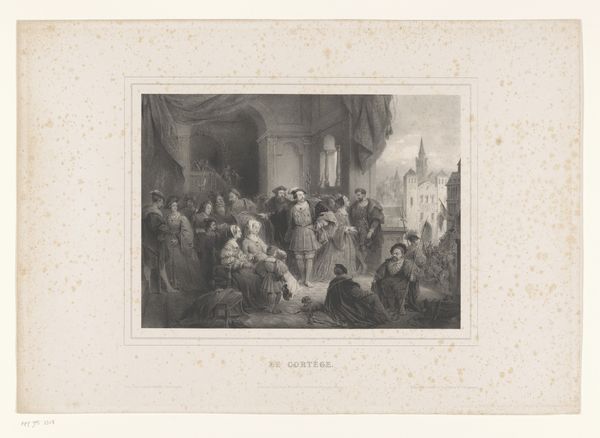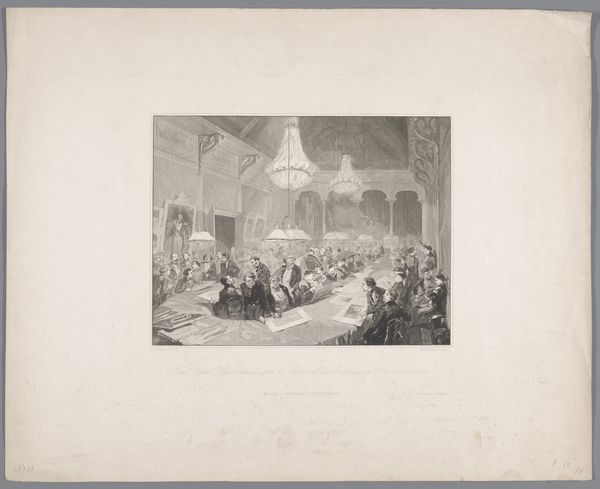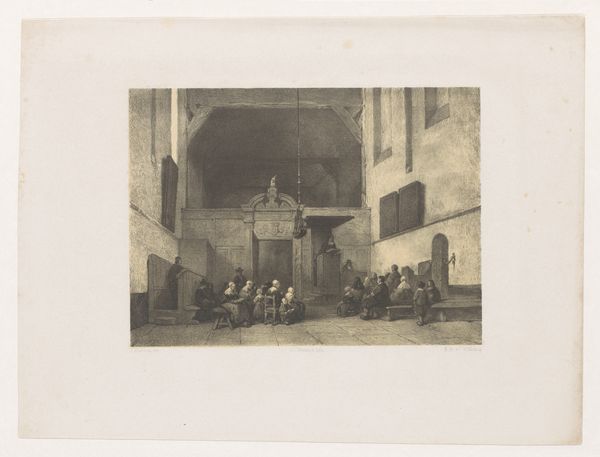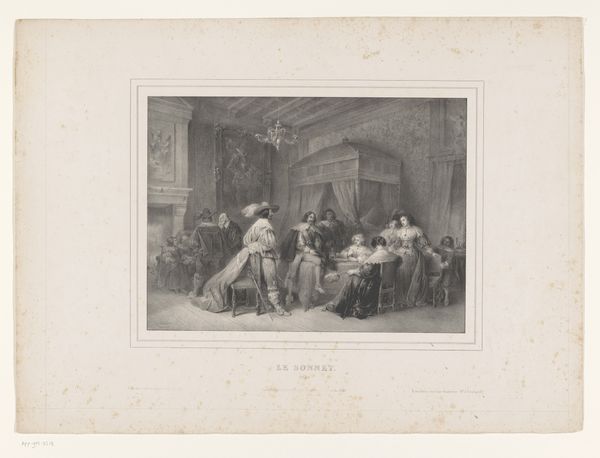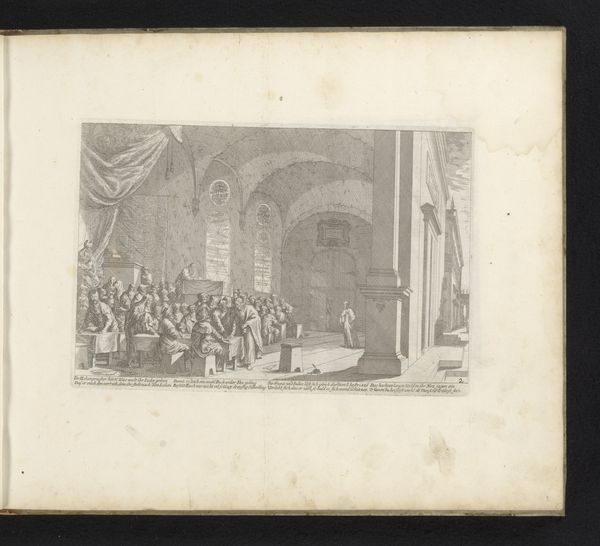
Lodewijk van Bourbon-Condé aan het hof van koning Frans II van Frankrijk 1842
0:00
0:00
adolphemouilleron
Rijksmuseum
print, engraving
#
portrait
#
narrative-art
# print
#
figuration
#
historical fashion
#
classicism
#
line
#
history-painting
#
academic-art
#
engraving
Dimensions: height 268 mm, width 351 mm
Copyright: Rijks Museum: Open Domain
Curator: I find this engraving so compelling—the artist Adolphe Mouilleron captures a pivotal historical moment in this 1842 print entitled, “Lodewijk van Bourbon-Condé aan het hof van koning Frans II van Frankrijk,” on display here at the Rijksmuseum. What's your immediate take? Editor: My immediate reaction is one of cold formality. It's very staged, very aware of itself. You can almost feel the weight of the crown and the suppressed tensions in the room through the lines and carefully posed figures. Curator: It’s amazing what an engraver can accomplish. This particular piece seems so tied to the period. Looking closely, one sees the rigorous, academic artistic tradition embedded within its very execution. It evokes that era’s printmaking trade, the engraver serving as the lynchpin between artistic vision and mass dissemination. Editor: Absolutely. The social dynamics are fascinating too. The title directs our gaze, framing Lodewijk as the focal point. But isn't it also about power, about the French court, and the highly codified interactions within it? There's this sense of hierarchy, played out in posture, in clothing—each detail whispering about the person's position in the world. I am drawn to ponder the complexities of Condé’s relationship to the crown during the French Wars of Religion, the historical context behind the encounter… Curator: Yes, Mouilleron is very deliberate in detailing the setting, which contributes to the historical accuracy of this grand, royal audience. It speaks to a specific era's craftsmanship where an artisan’s meticulous labor adds an inherent value, shaping the cultural landscape in that moment. The print could travel widely because it could be reproduced repeatedly, with little added cost to each print run, unlike paintings. Editor: And it's also about how these visual narratives were deployed. Who was meant to see this image? What narratives did it reinforce, or perhaps subtly subvert? Images like this had an impact on shaping historical consciousness. I’d venture to say there's more here than just a record of events—it also functions as an interpretation, perhaps even a kind of propaganda. Curator: I think it serves as a powerful document of its time, evidencing the importance and sophistication that engravings had in visual storytelling, capturing the cultural mores and material values of nineteenth century Europe. Editor: Indeed. Examining such pieces pulls the past into conversation with our present, reminding us to dissect the social, cultural, and political forces that shape not just art, but how we comprehend history.
Comments
No comments
Be the first to comment and join the conversation on the ultimate creative platform.

